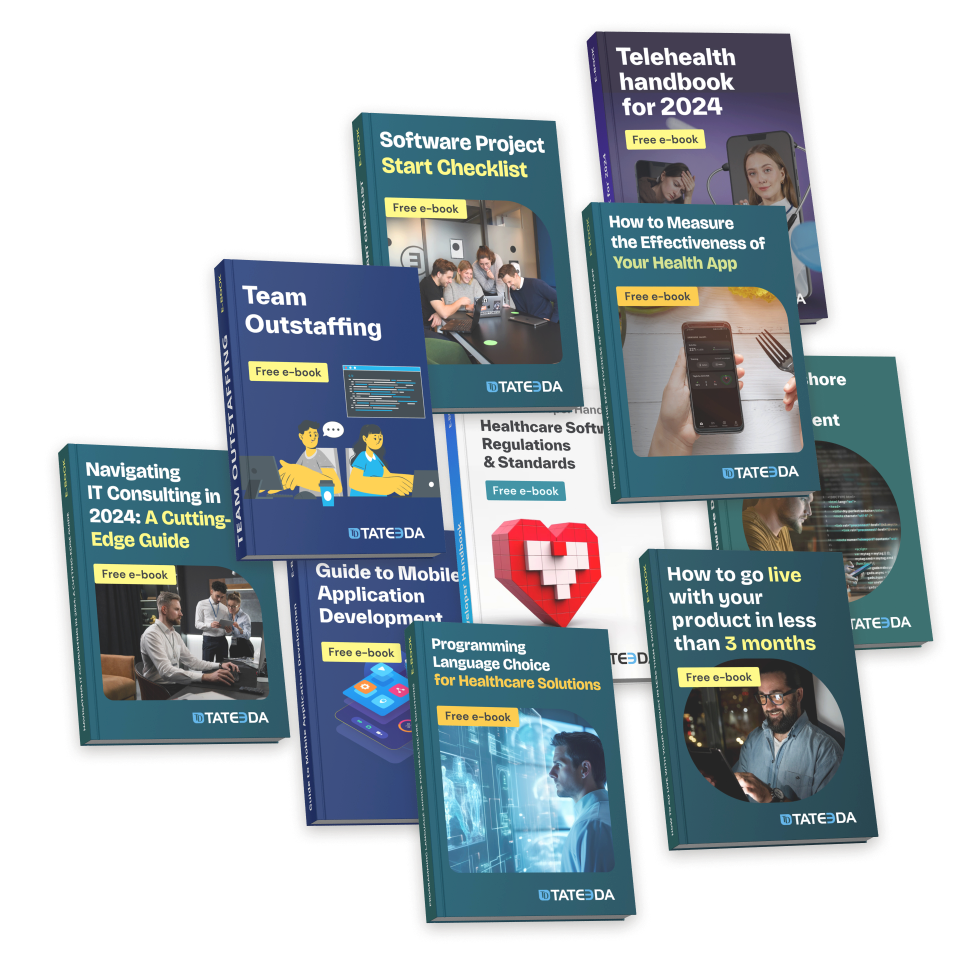Patient Portal Development Guide: Types, Features & Cost in 2025

In this article, we’ll discuss…
- The basic purposes of patient portal solutions in healthcare
- The features and benefits of patient portals for medical practices
- How to develop a patient portal and get the help you need with this type of project.
| ⚠️ Feel free to contact our IT experts for deeper project consultation and more information about our custom patient portal development services as a part of San Diego medical software development company! |
If you manage a healthcare business or medical organization, you most likely maintain hundreds or even thousands of personal profiles on your patients.
These profiles accumulate protected health information (PHI), as defined by HIPAA:
- Names
- Telephone numbers
- Geographic data
- Social security numbers
- Medical record numbers
- Health plan beneficiary numbers
- and so on…
PHI should never be shared with any third parties unless allowed by law.
One of the key patient rights ensured by HIPAA is patient access and review of health and billing records at any time (with certain exceptions).
How can you provide patients with full 24/7 access to their records?
With the help of a patient portal platform, of course!
A patient portal program is a brilliant digital health solution that will significantly enhance your professional relationship with your patients. Patient portals provide a bridge between patients and care providers, which, in turn, works to improve clinical business metrics. Collaborating with an EHR software development company can ensure seamless integration of patient portals with existing electronic health record systems, enhancing overall efficiency and patient satisfaction.
As an example of patient portal app development…
TATEEDA worked with a U.S.-based medical provider to implement one of the most effective telemedicine integration strategies by creating a secure, web-based Patient Payment Portal. Built using custom Angular development, .NET backend engineering, and SQL Server deployment, the user access portal solution streamlined healthcare payments with features like customizable payment plans, multiple payment options, and 24/7 access to protected billing information.
With compliance ensured through adherence to HIPAA, PCI, and NACHA standards, this healthcare patient portal solution empowered patients to manage their medical expenses online easily while reducing operational inefficiencies for the provider.
Results at a glance:
- 30% reduction in unsuccessful payment attempts.
- 40% fewer support requests related to payment issues.
- 50% faster transaction processing times.
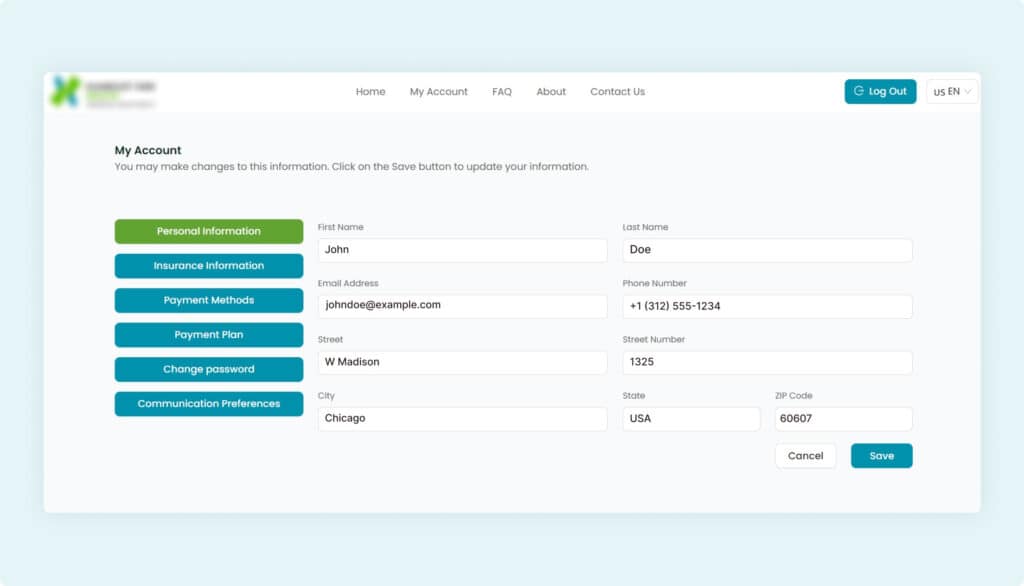
| TATEEDA GLOBAL has a long track record of success in web and mobile development in U.S. healthcare, including custom patient portal development. We created a patient portal system for LaMaestra Community Centers that allows their patients to navigate through LaMaestra’s health services, medical center information, and news. They can also make appointments and find optimal directions to their closest office locations. |
Let’s learn everything there is to know about patient portal design and custom hospital portal development in the next sections of this article…


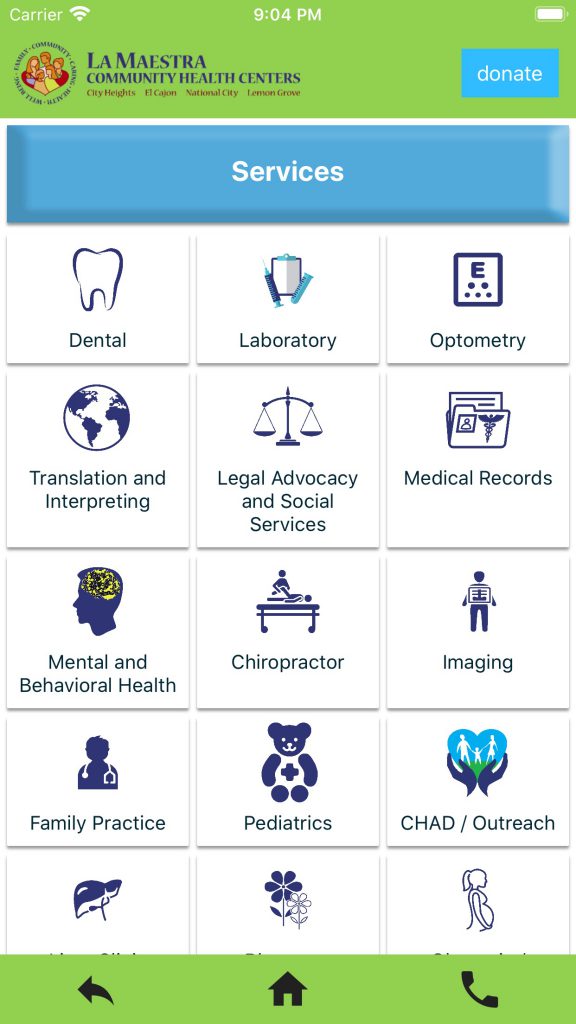
Table of Contents
What Is a Patient Portal?
A patient portal platform is an online solution (web page or mobile app) that provides patients with 24/7 access to medical records, personal profiles, health billing management, and their healthcare service data/history. Usually, this solution is a component of a more complex medical practice management software system, which incorporates several front-office and back-office modules, and must comply with various conditions like HIPAA regulations and the latest healthcare mobile app development trends.
Before you build a custom patient portal solution, it’s important to learn more about the types of patient portals and their purposes. The main online patient portal software types include standalone and integrated/tethered portals.
✔️ Standalone Patient Portal
Supports a limited number of functions. This is usually just one key function, like accessing lab test results or scheduling medical office appointments. The database and/or file storage solution behind it is rarely connected to larger systems (such as data exchange with powerful HMS systems or custom-developed EHR solutions).
This portal type works well for smaller healthcare businesses like private labs, independent drugstores, health-tech startups, local medical offices, and boutique healthcare providers.
A standalone patient portal is driven by simpler software architecture and therefore requires less investment/effort in terms of healthcare portal development. A less-skilled programming team can build it in a shorter time, so the cost is normally affordable for smaller healthcare businesses.

Learn more about Building Custom Medical Appointment Scheduling Systems.
✔️ Integrated Patient Portals
Also called connected or tethered portals: They serve as a front for a larger or combined system, such as a hospital management system (HMS) or electronic health record (EHR).
An integrated portal features a direct connection to the patient database of a medical facility or organization and is capable of providing a wide variety of functions and services.
This type of healthcare portal development requires more time and effort for design and build-out, and is therefore associated with greater development costs. Moreover, it can become a part of a much bigger digital transformation project involving medical system interoperability and custom hospital management software development.
Learn more about Hospital Management Systems and How to Design Them.
✔️ Common Features for All Types of Patient Portals
At the same time, there are several features specific to both types of patient portals:
- Patient authorization (login/password)
- Round-the-clock accessibility via web or mobile
- Safe communications with medical staff
- Interactivity and data-management capabilities
If you have some ideas about building a patient portal but you don’t know how to start this project, please book a free chat with our medical software experts to discuss tech configuration:
Do You Need Patient Portal Development Services?
Over a decade in the business, we have delivered numerous custom products, including insurance portal development and medical patient billing services.
Types of Information That Can Be Managed via Patient Portals
The purpose of a patient portal is not only to bring your company in compliance with HIPAA requirements, but also to facilitate and streamline all areas where your organization deals with patients.
This kind of IT solution reduces the burden put on your front desk by massive numbers of incoming calls, administrative tasks, patient visits, and emails.
Plenty of areas can be enhanced by patient portals:
- Non-urgent medical appointment scheduling/visit history
- Doctor/medical procedure timetables and business hours
- Contact and geographic information of healthcare facilities
- Medication plans and refills (e-prescriptions; learn more about eRx software development)
- Immunization plans/certificates
- Lab tests: PDFs, printable/electronic copies
- Allergies/intolerance information
- Secure doctor messaging and file/data-sharing
- Healthcare requests, benefits, and insurance management
- Payments and custom billing management system
- Updating personal data (contact details, etc.)
- Viewing the company’s news and health-related educational materials
- Downloading and completing electronic forms
- Downloading or managing different types of personal health data
Below is an example of a healthcare portal development product: a powerful patient access gateway application with multiple features and options. This type of patient portal software can be built using either mobile or the latest telemedicine technologies so that patients can manage their relations with healthcare providers from their smartphones, tablets, laptops, or PCs.

| Do you have questions about creating patient portals? TATEEDA GLOBAL can help you create a patient portal for your healthcare business or medical organization. We have deep expertise in building integrated and standalone patient applications, including mobile, cloud-based integrations, and healthcare web portal development. If you have ideas but don’t know where to start, drop us a message! |

Check out the following article to learn about using patient portals in pharmacies: Development of Custom Pharmacy Management Software.
How Patient Portals Can Help Optimize Expenses for Healthcare Providers
There are many advantages to be gained by introducing patient portals to your medical practice, each of which will result in considerable enhancement of your financial reporting.
The patient portals benefits include:
Saving a lot of employee time
When patients are introduced to self-service via online portals, front-desk workers can breathe easily. Fewer low-priority calls or other non-urgent communications occupy the front desk during peak hours, leaving more efficient time for urgent or important calls.
Since a great number of administrative requests can now be covered without the involvement of human workers (until absolutely necessary), a lot of valuable personnel time can be saved. Learn how to manage the time and tasks of healthcare workers with a custom medical staff management system.
Higher quality of patient care and satisfaction
Patients don’t need to get irritated waiting in crowded lines or trying to reach a busy front desk by phone.
Instead, everything can be done online in no time. Patients can schedule, reschedule, or cancel appointments with their care providers, review their prescriptions or recommendations, get medication refills, and see other healthcare specialists (and schedule telehealth sessions) when required.
As you see, patient portals can significantly improve medical practices everywhere by bringing convenience, facilitation, and better patient satisfaction rates.

Read more: ➡️ How to Benefit from Remote Patient-monitoring Software Development
Better time management for physicians and patients
With patient portals, it’s easier to manage and distribute time slots, so no time is wasted due to sudden cancelations.
When a patient appointment cancellation happens, other patients can be informed via phone or email notification and claim the empty timeslot, or those who monitor online schedules can use the opportunity to reschedule their appointment to an earlier or more convenient date/time.
Better epidemiologic safety
Since patients can address many issues through online portals, they can stay at home with greater frequency.
Thanks to decreased foot traffic in hospitals, medical centers, and pharmacies, organizations can better control the risk of contagious infection (not only COVID-19, but also traditional flu and many more). This is especially beneficial for elderly or very young patients. Learn more: Senior Care Mobile Application Development.
Reduced potential for human error
Less manual work and/or human involvement is needed, so fewer errors will be made. Front-desk staff won’t need to re-enter or write down the contact/personal information of patients or fill out forms multiple times per day.
Additionally, with portals, fewer potential misunderstandings take place in the process of patient-provider communication. All data is verified and found within the system, so there is no need for additional calls or other clarifications.
Before we proceed to discuss patient portal features, please take your time to consider our patient portal app development services:
Custom Healthcare Solutions
See how we can engineer healthcare software, validate your ideas, and manage project costs for you.
Features of Patient Portal App Solutions
When you develop a patient portal from scratch (in contrast to using off-the-shelf software products), it’s an opportunity to define your own, very specific configuration of features and ideas to suit your specific business model at its best.
Patient portals can feature different sets of functions, depending on their types (standalone or connected):
- A standalone patient portal can work with a primitive back-end solution, since it does not need powerful features or a high-performing database to back it up.
- A connected or tethered patient portal is a front-end solution for an EHR system or combination of portal types. It can offer an unlimited number of features that provide patients with an advanced user experience and services.
Read also: ➡️ Custom EHR/EMR Software Development: The Complete Guide
Let’s list some of the most popular patient portal features that can be included in your custom solution:
Patient Registration/Authorization
First, new patients are introduced to your system and get their unique credentials.
For more sophisticated protection and enhanced convenience for your patients, your patient portal can be augmented with traditional multi-factor authentication and/or biometric features: voice command, fingertip recognition, etc. A set of smart features that facilitate patient dialog is sometimes called a guided patient registration system: a patient gets individualized support and hints while moving throughout the registration or authorization process, including patients with special needs.
Once a patient confirms their personality and credentials, they can manage their medical appointments and access sensitive information, like demonstrated in a custom patient portal solution example below:
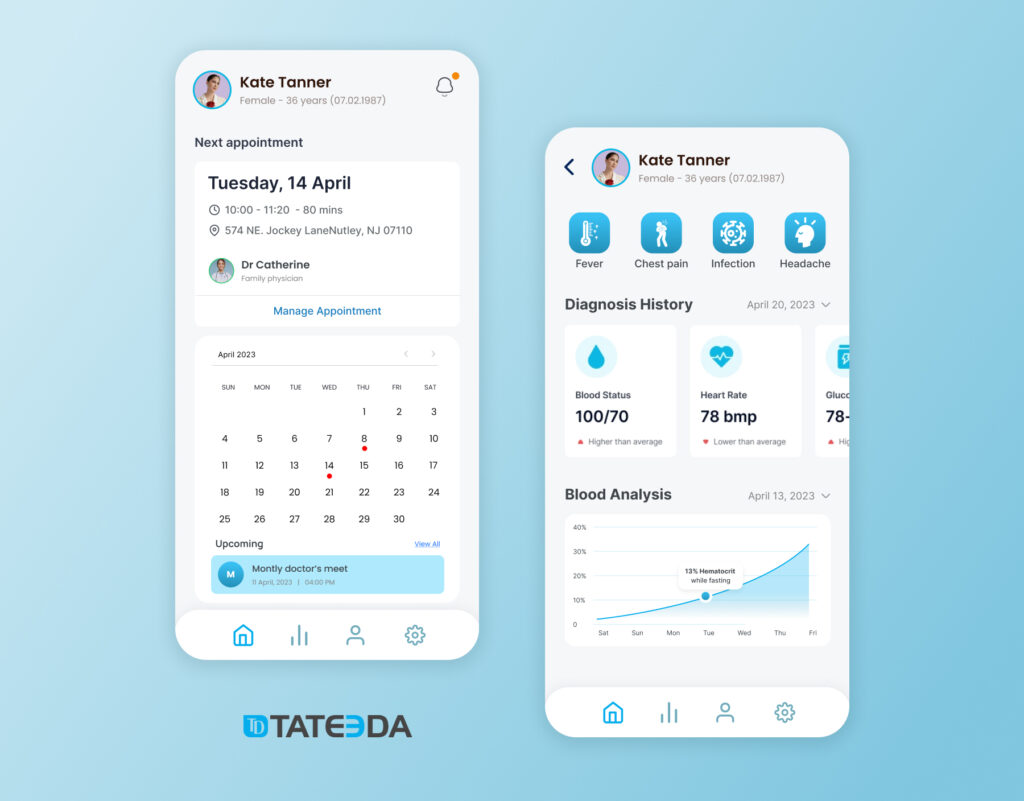
Personal Profiles
A patient portal of any complexity should have a system governing personal patient profiles that facilitates access rights and data protection.
Each personal account/profile should be readily accessible to patients and available for data management, including editing and updating personal data as required by HIPAA and other important regulations. Learn more: ➡️ Mental Health Therapist App Development.
Medical Appointment Scheduling
Online patient portals allow people to schedule appointments with their physicians.
This happens as follows: Patients navigate physician schedules/timetables, view open time slots, and check other relevant information to book an appointment in accordance with their needs. Once a time slot is selected and taken, a confirmation email or call follows.
Chats and Chatbots
One of the most important features of any patient portal interface is the ability to receive personalized help and/or consultation via protected chat.
This need can be covered by implementing a live chat feature or chatbot empowered to address a wide number of issues and questions until the intervention of a human operator becomes inevitable.
This feature can function as a channel that allows patients to get a quick consultation or clarification from their physician or their subordinates e.g., nurses or healthcare assistants. Learn more: ➡️ Virtual Nurse App Development.
If you’re interested in medical human resource management solutions, be sure to learn everything you can about Medical HR Software Development.
Let’s Start Custom Patient Portal Development Together
With over 100 senior developers skilled in Angular, Flutter, and the .NET tech stack, we can effortlessly deliver a custom portal tailored to your needs.
News and Education
A patient portal can act as a true gateway to healthcare company news, updates, health data visualization, and educational materials.
Portals can include a collection of health-related recommendations, videos, and/or articles aimed at nurturing a better understanding of disease and corresponding medications, wellness/fitness tips, and important news delivered via push notifications (if allowed by patients).
Personalized Patient Data Management
Patient portals provided by clinics and hospitals should provide access to well-protected personalized patient data, including medical history/records, insurance management solutions, lab test results, billing history, medication plans, and more.
Specific configuration of inner data management features depends on the type and purpose(s) of your patient portal. If you would like to discuss specific features for your solution, please contact us for a free consultation.
Secure Payment Gateway
One of the most important features of patient portals is the ability to make payments and see payment history. Not all clinics or medical centers allow online payments, as some prefer to accept payments on-site at the POS. However, thanks to wider implementation of telehealth capabilities, online payments are developing, too. In fact, patient portals can be integrated with a third-party payment gateway provider. Additional capabilities, such as payment history, can also be delivered within your protected patient portal.

Learn more: ➡️ Healthcare Payroll Software Development
Patient Portal Software Development, Step by Step
How does one go about creating patient portal software? Let’s learn the major steps of the process:
Step#1: Determine Patient Portal’s Purpose and Features
- Create a list of functions you want to include in your patient portal.
- Identify whether yours should be a connection or a standalone portal. Is it a front-end solution for an existing system, or does it need to be built as standalone software?
- For the design architecture of your portal, you’ll need to define your platform configuration (web/mobile) and backend requirements (should be deployed in the cloud or on a dedicated server).
- Identify the web and mobile technologies needed to develop a patient portal of your specific configuration. For example, the development of custom patient web portals can require skills in JS, Angular, Dart, jQuery, HTML, CSS, and others. For mobile, this can be either Android/iOS native development, or a cross-platform project with frameworks like Flutter, React Native, or Xamarin (a component of .NET development platform.)
Step #2: Gather a Team of Skilled Patient Portal Developers
- Based on the technical requirements for your patient portal, define the types of developers that need to be included in your team: front-end/back-end, full-stack, database developers, UI/UX designers, content writers, etc.
- Make sure to cover your needs according to talent/skill set (if identified) by hiring full-/part-time developers or hiring experienced outsourcing or a project augmentation partner.
- Make sure you have a good project manager who is experienced in web and medical mobile app development.
- Make sure to set the general deadline and budget for the project.
Step #3: Plan Your Patient Portal Project and Control Execution
- Break the project down into doable tasks and assign them to team members.
- Set deadlines for each activity.
- Get UI/UX designer(s) to plan interface and usability features.
- Get the programmers/developers to accomplish the whole project
- Ensure fruitful collaboration between the coders and QA engineers
- Make sure to implement all necessary security features and protocols, as required by HIPAA.
- Assign content writers to create user tutorials/tips and scenarios to onboard and guide patients throughout your portal’s capabilities.
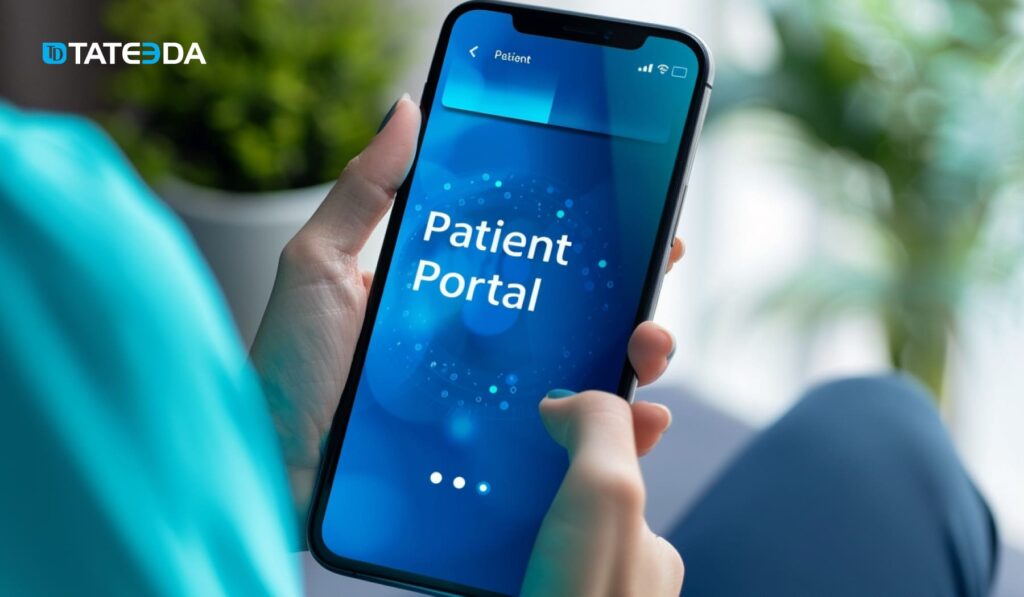
Learn more: Mobile software development in San Diego, California
How Much Does It Cost to Develop a Patient Portal?
The cost of patient portal development depends upon the size of the team involved, the technologies used, and the time required for implementation.
Custom Patient Portal Development Team
Development of a basic patient portal with a few critical features usually requires 2-3 developers (one-two front-end, and one back-end developer) plus a project manager and QA specialist.
The cost of hiring a programmer in the U.S. is expensive. The average yearly wage of a front-end developer runs as high as over $100K, or at least $8K per month.
The average duration of this type of project is 2-3 months. Hiring three freelance developers for three months will cost you at least $70-80K (in-house specialists will cost you more.) You should also add compensation for a project manager and QA engineers to be included in the process.
Hiring a team of remote developers will cost you less. Developers of the same proficiency levels in Eastern Europe and other remote locations are paid $2,500-3,500 per month (minimum estimate), meaning that the same team can cost you about $30-40K. It’s safe to say that this equals the average cost of patient portals if you mean a minimal set of features.
Please note that we’re talking about a rough estimate of workforce costs for a small team alone. If you need more specific numbers, including a total patient portal software cost estimate, please contact us for more information. TATEEDA GLOBAL is a California-based company that employs a mix of local and remote developers to manage project costs for you.

Duration of the Custom Patient Portal Development Project
Depending on the technological profile and the size of the team, project execution can take three to six months, on average.
The duration of the project can be minimized by assembling ready solutions from different libraries or patient portal software vendors and open-source catalogs via API integration and appropriate setting of those components.
At the same time, a highly customized patient portal with a lot of individualized solutions will require lengthier engagement from senior software engineers. This will contribute massively to additional development costs.
Summary: A fairly complex patient portal software development project (including web development, custom cloud-based software integration, and other features) can cost about $40-60K per project, with an average project duration of three to six months.
For a precise project estimate, please contact us.
How much does it cost to develop medical software?
| Project duration | 2-6 months (estimated) |
| Project components | Online patient portal, multi-cloud backend, access authorization system, API integration, appointment management, notifications, and other features |
| Team (estimated; may scale up/down) | 2-4 developers, 1 QA, 1 project manager |
| Estimated costs | $40,000-60,000 USD (the exact price should be specified specifically for your project) |
TATEEDA GLOBAL’s Experience in Building Patient Portals
TATEEDA GLOBAL has vast expertise in building patient and nurse portals for U.S. healthcare companies. We know how to create patient portal software!
Recently, we helped develop a Patient Payment Portal that not only supports a superb payment-handling solution for medical billing but also integrates advanced analytics tools for tracking payment trends and patient engagement. This addition allowed our client to better understand their financial workflows and enhance service delivery through data-driven insights.
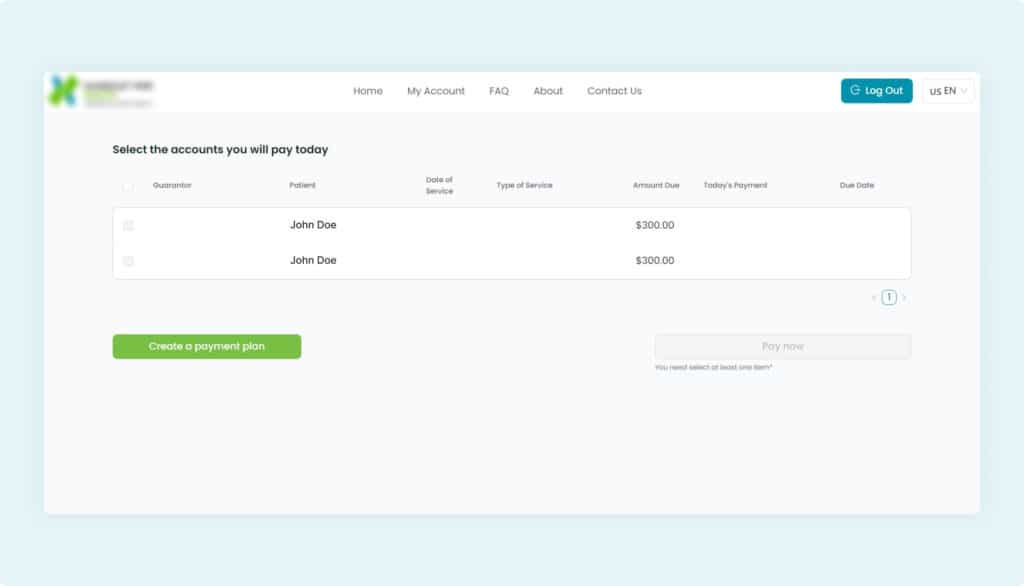
We have delivered a nurse management portal for Travel Nurse Healthcare (a nurse portal is similar to a patient portal in terms of technical functioning and nuances) as well as a patient portal for LaMaestra Medical Centers.

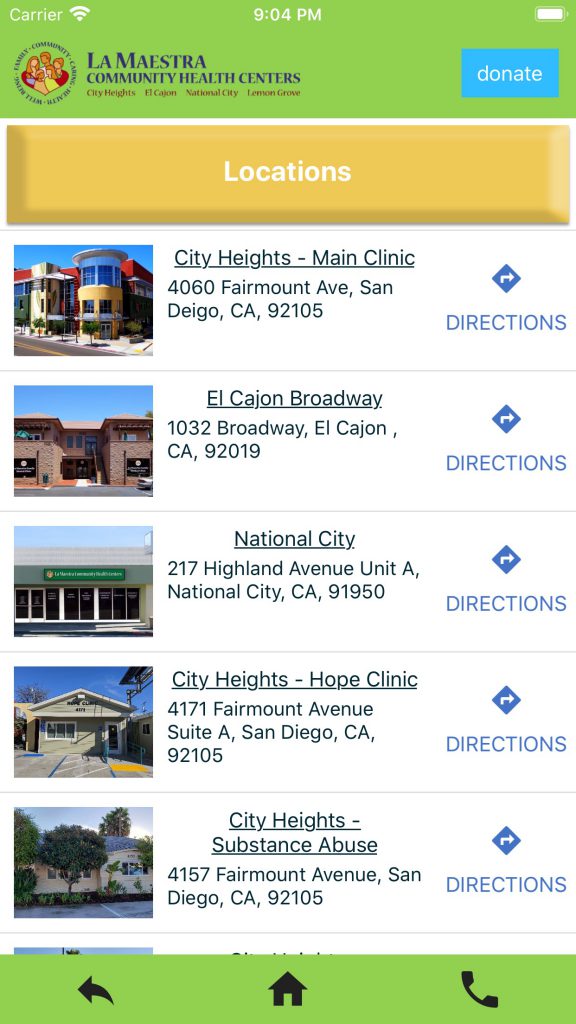
These solutions included a set of super useful options:
- Authorization system
- Web and mobile interfaces
- Billing and financial modules
- Geographic navigation and directions
- Many interesting API integrations
- Availability of medical services
- Appointment-scheduling module
- Managed in-app content with web-based master dashboards
Read also: ➡️ Our Experience in Building Remote ECG-monitoring Systems
In Conclusion: Patient Portal Development Services
Patient portals bring your healthcare services closer to your patients.
Is it time to build patient portals for your healthcare organization?
If you need a professional team to undertake full-cycle development of a patient portal solution or augmentation for your existing projects, TATEEDA GLOBAL is here for you!
Our qualified IT professionals can create a custom patient portal for your medical organization.
We offer hospital portal development and other services, like:
- A full-cycle software development service in San Diego, California
- Compliance with HIPAA-backed safety standards
- Affordable project costs, thanks to our R&D branch in Ukraine
- Personalized connection with our project manager HQ in San Diego, CA
- Vast onsite experience with U.S.-based IoT, healthcare, biotech, and pharma companies
- Fast team deployment—within 48-72 hours
Contact TATEEDA GLOBAL today to start building the custom patient portals of your dreams!









